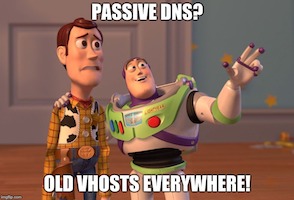Passive DNS is not a new technique but, for the last months, there was more and more noise around it. Passive DNS is a technique used to record all resolution requests performed by DNS resolvers (bigger they are, bigger they will collect) and then allow to search for historical data.

